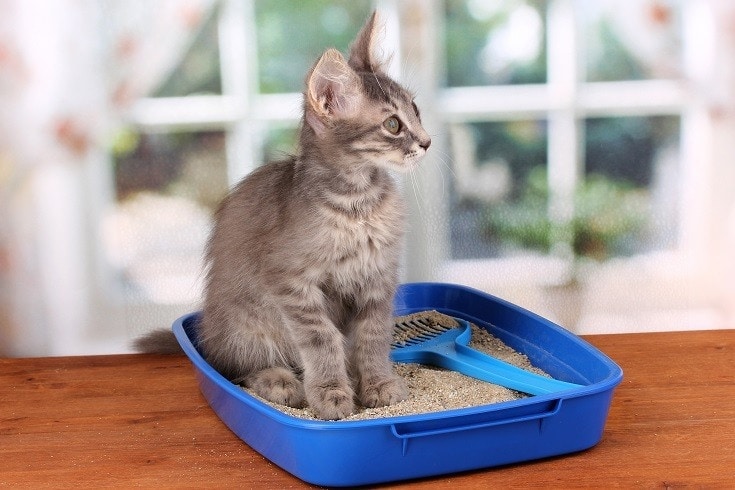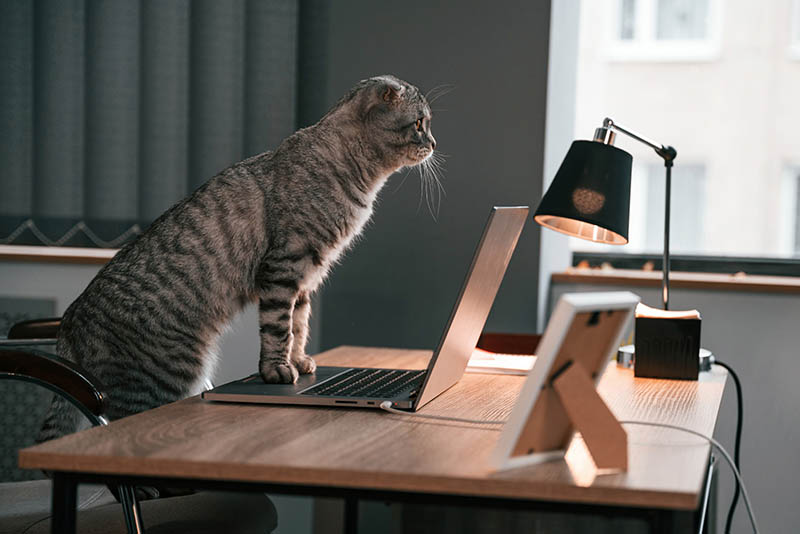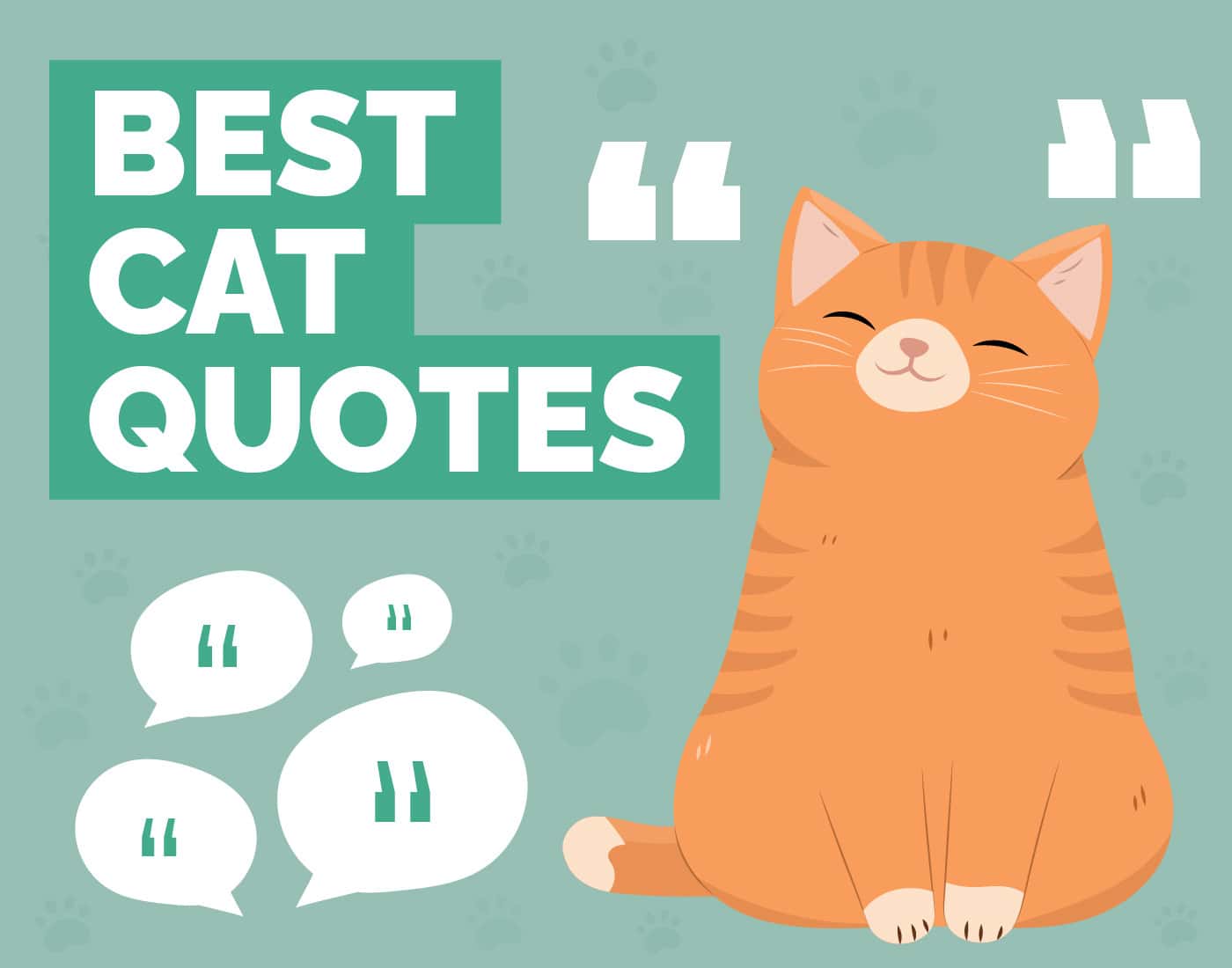17 Smallest Cat Breeds: Felines That Stay Little (with Pictures)
Updated on
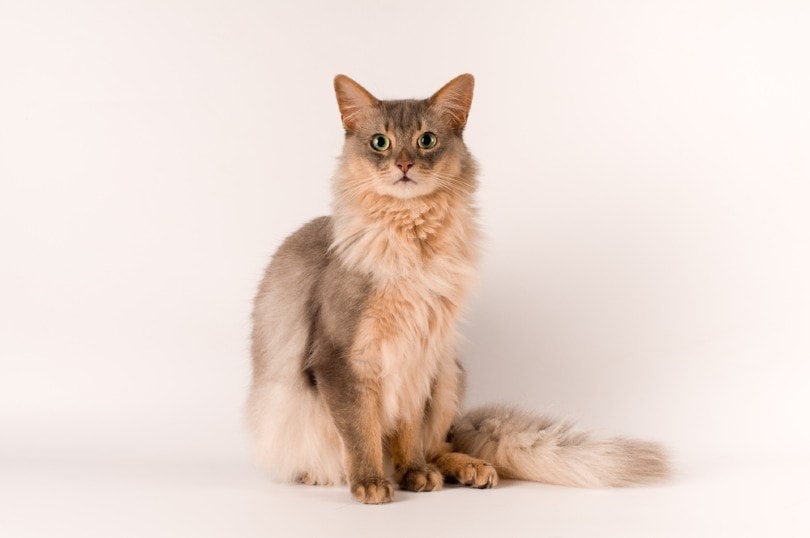
There’s just something about kittens that makes them exceptionally endearing and adorable. Maybe it’s their playful antics, and maybe it’s their tiny noses and toe beans. Their small size definitely is a bonus because as big as they may think they are, they don’t take up much space. For many people, a cat that stays small for its entire life isn’t just cute, it’s also practical.
If you have a small living space, a tiny cat can be a good addition to your home without taking up as much space as a dog or large cat. If you’re interested in a cat that will always stay little, no matter the reason, keep reading!
The 17 Smallest Cat Breeds
1. Singapura
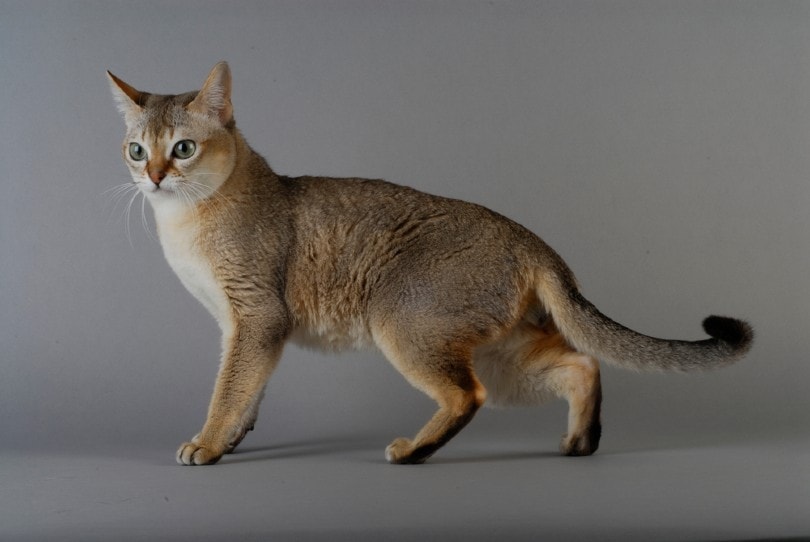
Known as the smallest breed of cat, the Singapura has big doe eyes, large ears compared to the size of the cat, and a big personality. This breed only grows to around 4–8 pounds and stands at 8 inches or smaller. They are social, playful, and fun, but may also have some neurotic tendencies and can be quite the handful for something so small.
Related Read: How Much Does a Singapura Cat Cost?
2. Cornish Rex
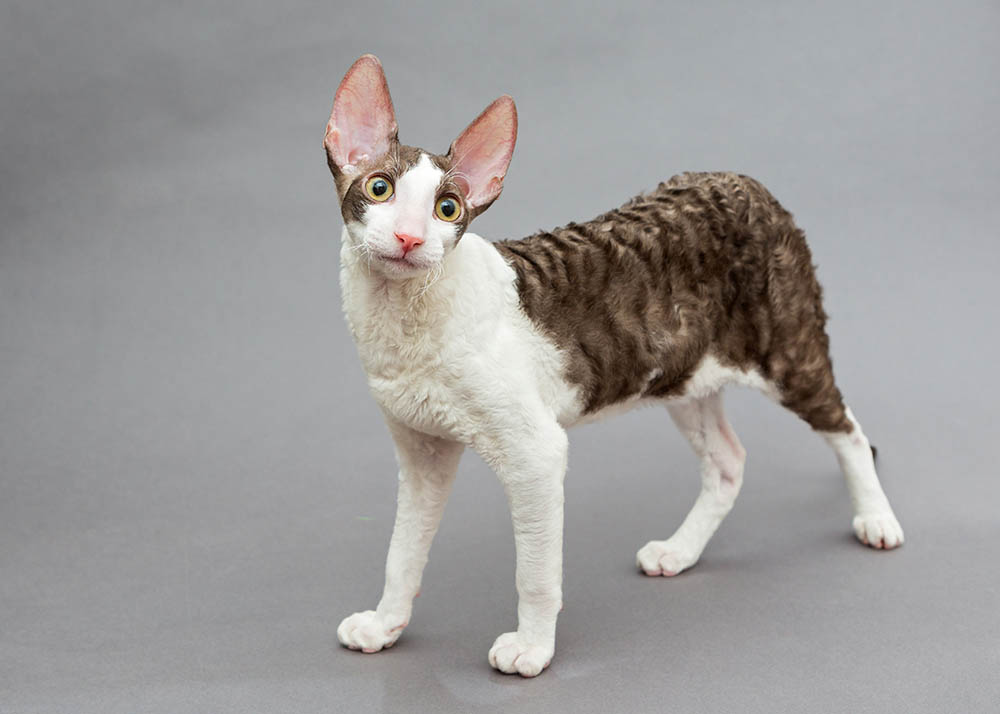
This breed of cat has a soft, downy coat with a curl to it. However, the coat is thin, and these cats are sometimes confused with other “naked” cat breeds. Their bodies are sleek and elegant with a delicate appearance. This breed is highly social and loves spending time with its people. Although they stand between 8–12 inches, they typically only weigh 6–10 pounds.
3. Devon Rex
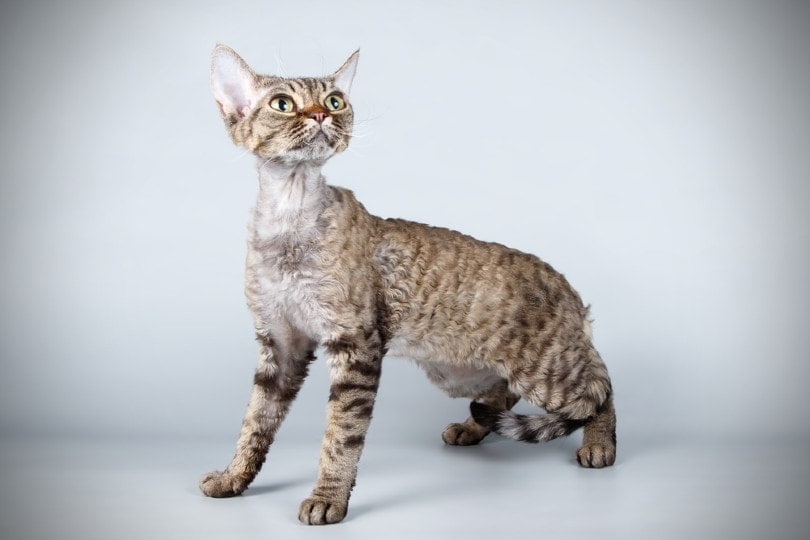
Often mixed up with the Cornish Rex, the Devon Rex is another elegant, sleek cat with downy, wavy fur. They tend to have a larger head, narrower chest, shorter legs, and a coarser coat than the Cornish Rex. They are overall slightly smaller as well, growing to around 10–12 inches and 6–9 pounds.
4. Sphynx
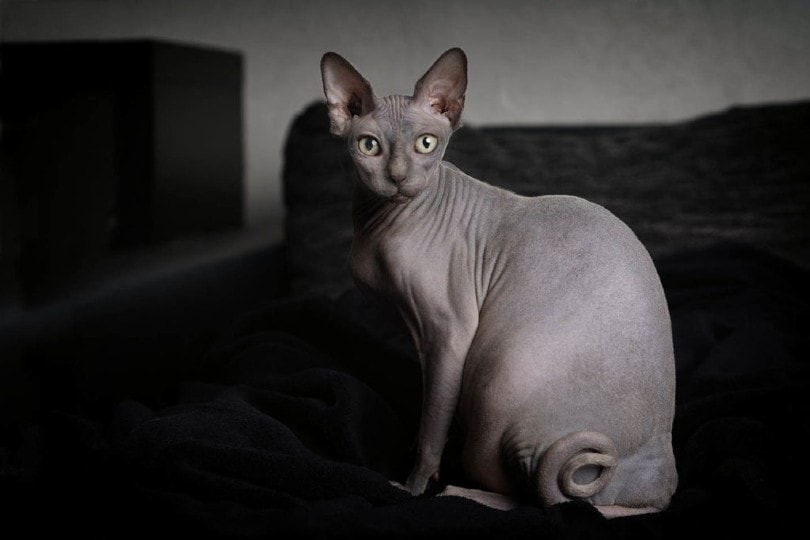
Possibly the most recognizable breed of cat, the Sphynx is a hairless cat breed, although they do sometimes develop small patches of fine, short hair. This breed is muscular but sleek, friendly, social, and active. They grow to around 8–10 inches in height and may reach 6–12 pounds, with males potentially reaching up to 14 pounds.
5. American Curl
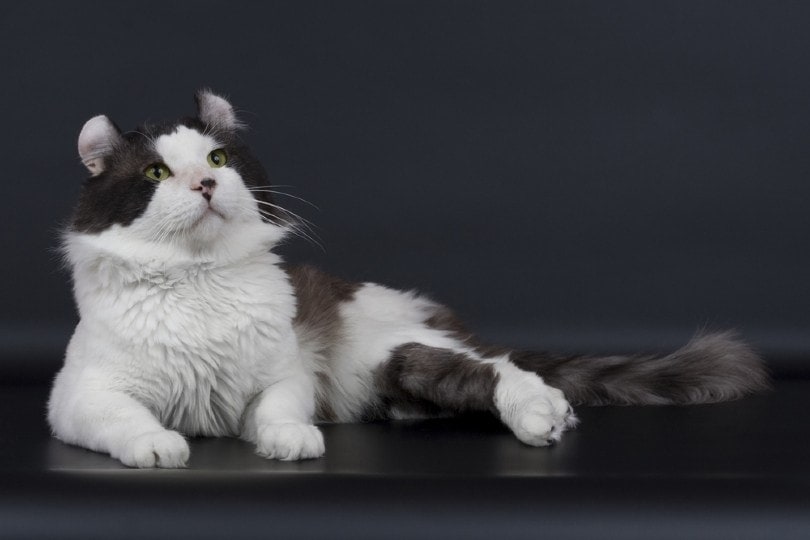
The American Curl has a medium-sized body, reaching up to 12 inches in height but usually only reaching 5–10 pounds. Their ears are distinct because the pinna of the ears fold backward instead of standing upright like normal cat ears. This breed has a long, muscular body and is known for its friendly, people-oriented personality.
6. Scottish Fold
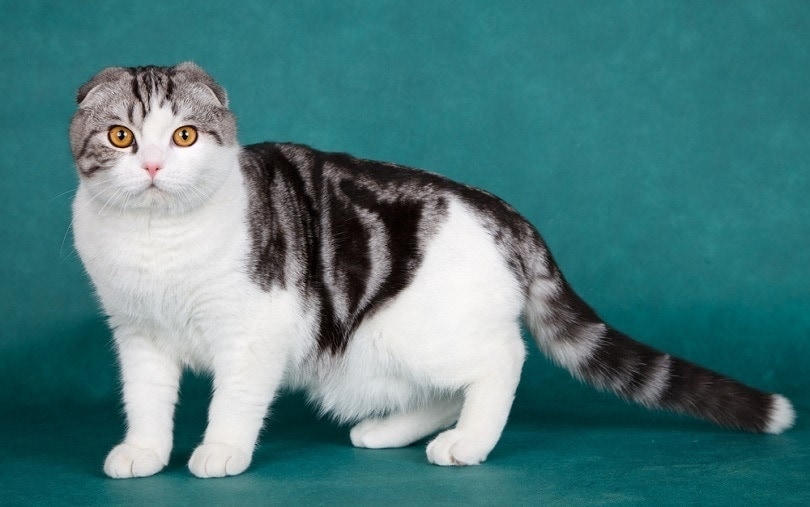
Another breed with unusual ears, the Scottish Fold has ears that fold forward. Combined with the breed’s round eyes and round, fluffy face, these cats have a cute, cartoonish appearance. They grow to 8–10 inches in height and can be as small as 6 pounds as an adult, although large males may grow as large as 13–14 pounds.
7. Turkish Angora
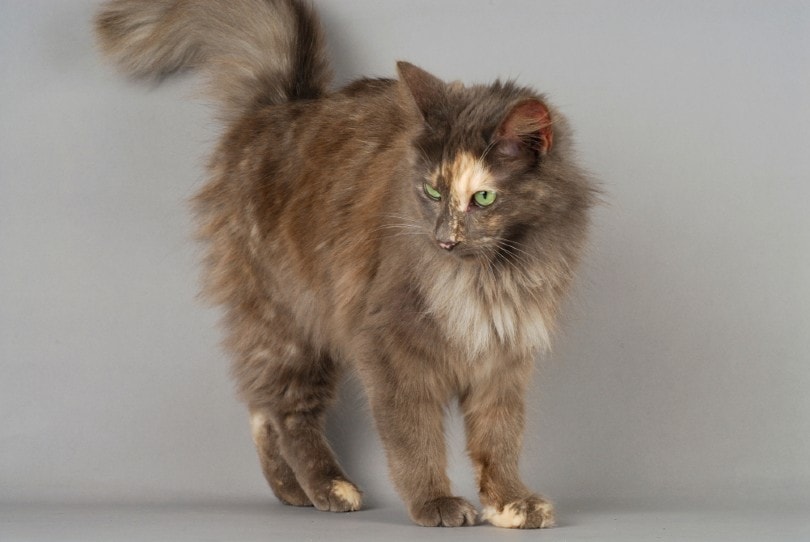
The Turkish Angora is a regal cat with a full, luxurious coat. Under the coat, this breed is muscular and well-built, growing up to 14 inches in height. However, they typically only reach 5–10 pounds, but large males can reach 15 pounds. These cats are usually healthy and can be quite active and playful.
8. Egyptian Mau
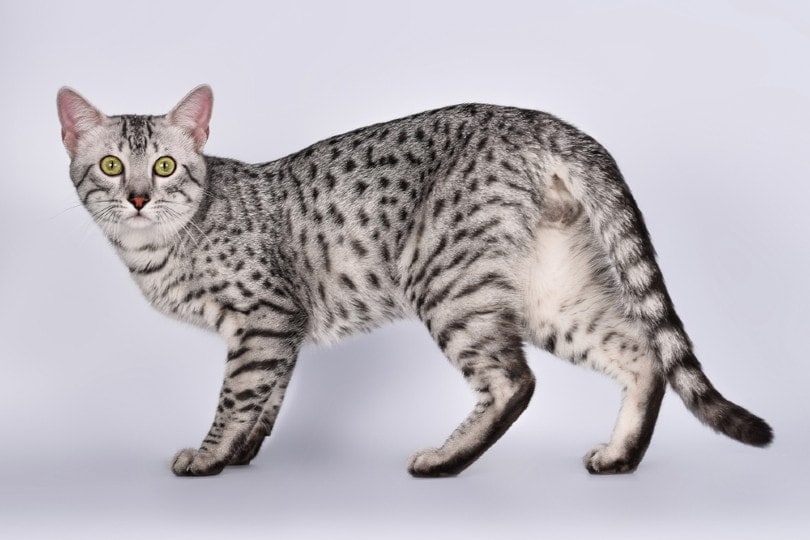
This ancient cat breed has been around for at least 3,000 years. The Egyptian Mau has a wedge-shaped head and a muscular but lean body. They usually stay below 10 pounds, but some can reach up to 14 pounds. This breed only stands at 7–11 inches in height.
9. Siamese
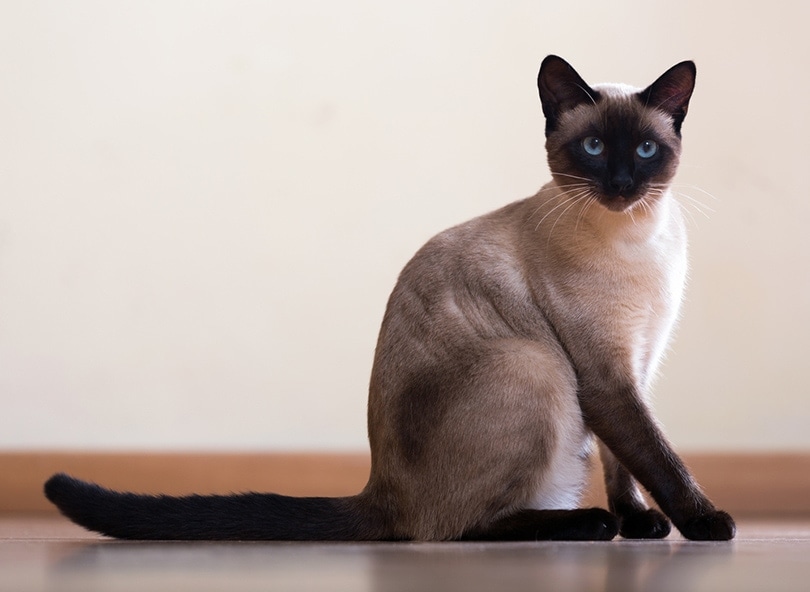
The Siamese has an elongated body with a delicate appearance and a long tail. They are known for their overly vocal nature and distinct pointed markings. They typically grow to 8–10 inches and may reach 6–14 pounds, although this lanky breed tends to lean toward the smaller end of that range.
10. Burmese
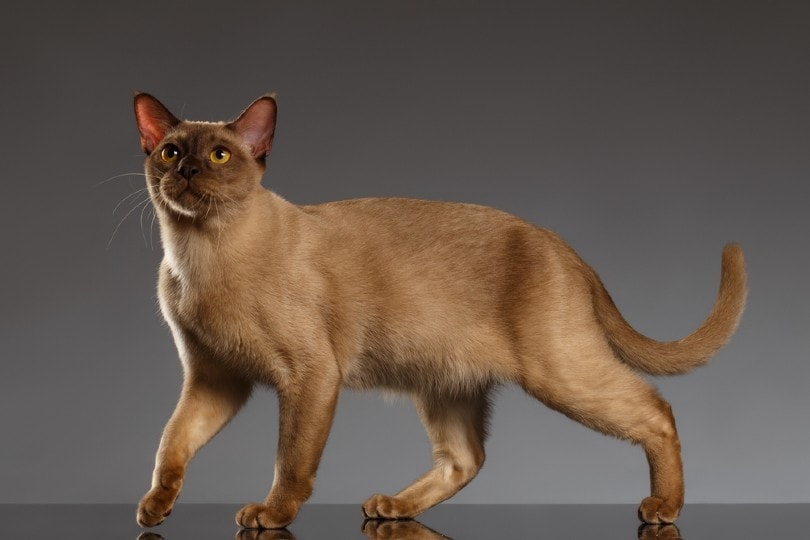
At a glance, the Burmese may be confused with the Siamese, but this breed has a sturdier appearance than the Siamese. Burmese cats grow to 10–12 inches and may reach 6–14 pounds. However, they have a powerful, muscular body that is much less lanky and lean than the Siamese.
11. LaPerm
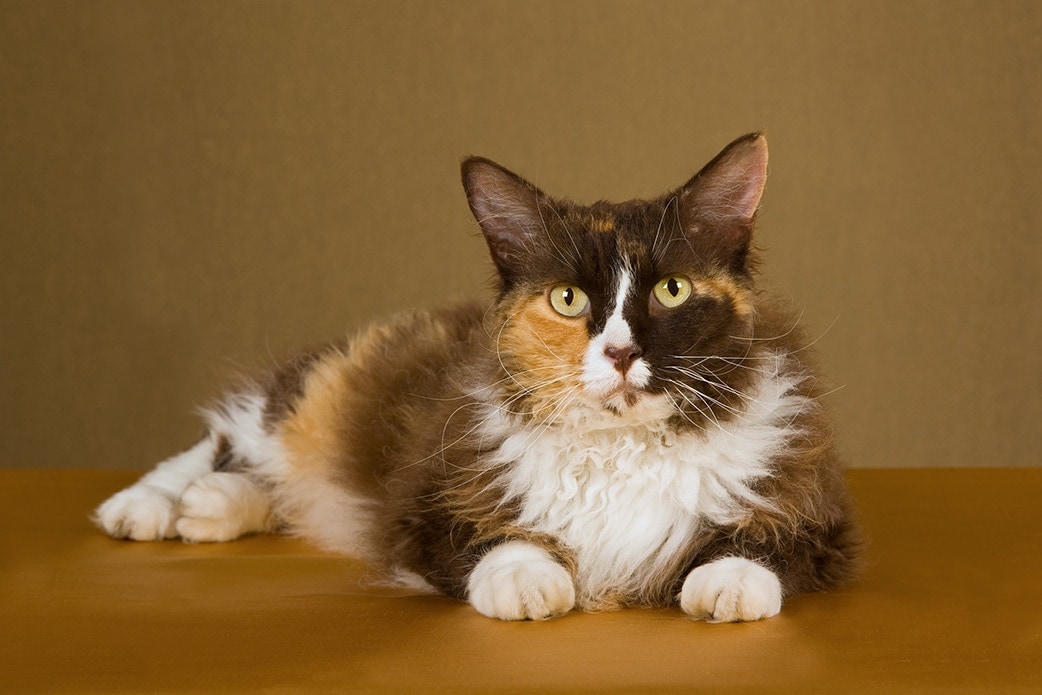
This unusual breed of cat has a curly coat, giving it its name. The LaPerm has large ears compared to its body size, almond eyes, long legs, and a fluffy, elongated tail. They can reach 5–10 pounds and usually stay below 10 inches in height. This breed is powerful, muscular, and highly entertaining.
12. Somali
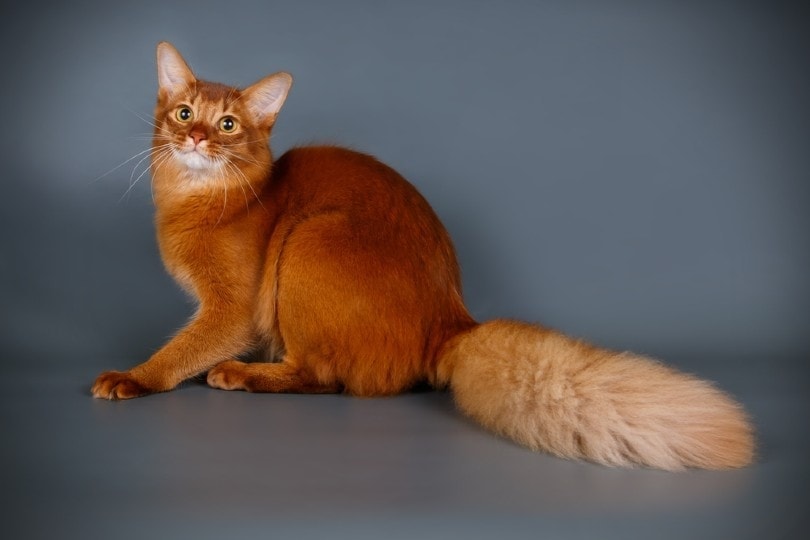
Related to the elegant Abyssinian, the Somali grows to 7–11 inches and may be 6–10 pounds. Although somewhat similar in appearance to the Abyssinian, the Somali has a longer coat and a sturdier, stockier appearance. These bold cats are lively and active, often enjoying climbing and jumping.
13. Toybob
The Toybob has a short, kinked tail and retains a highly kitten-like appearance throughout its life. This is not an overly energetic breed, but they are social and love the company of people, making them excellent lap cats. It’s very close in size to the Singapura, growing to 4–8 pounds and reaching heights below 8 inches.
14. Munchkin
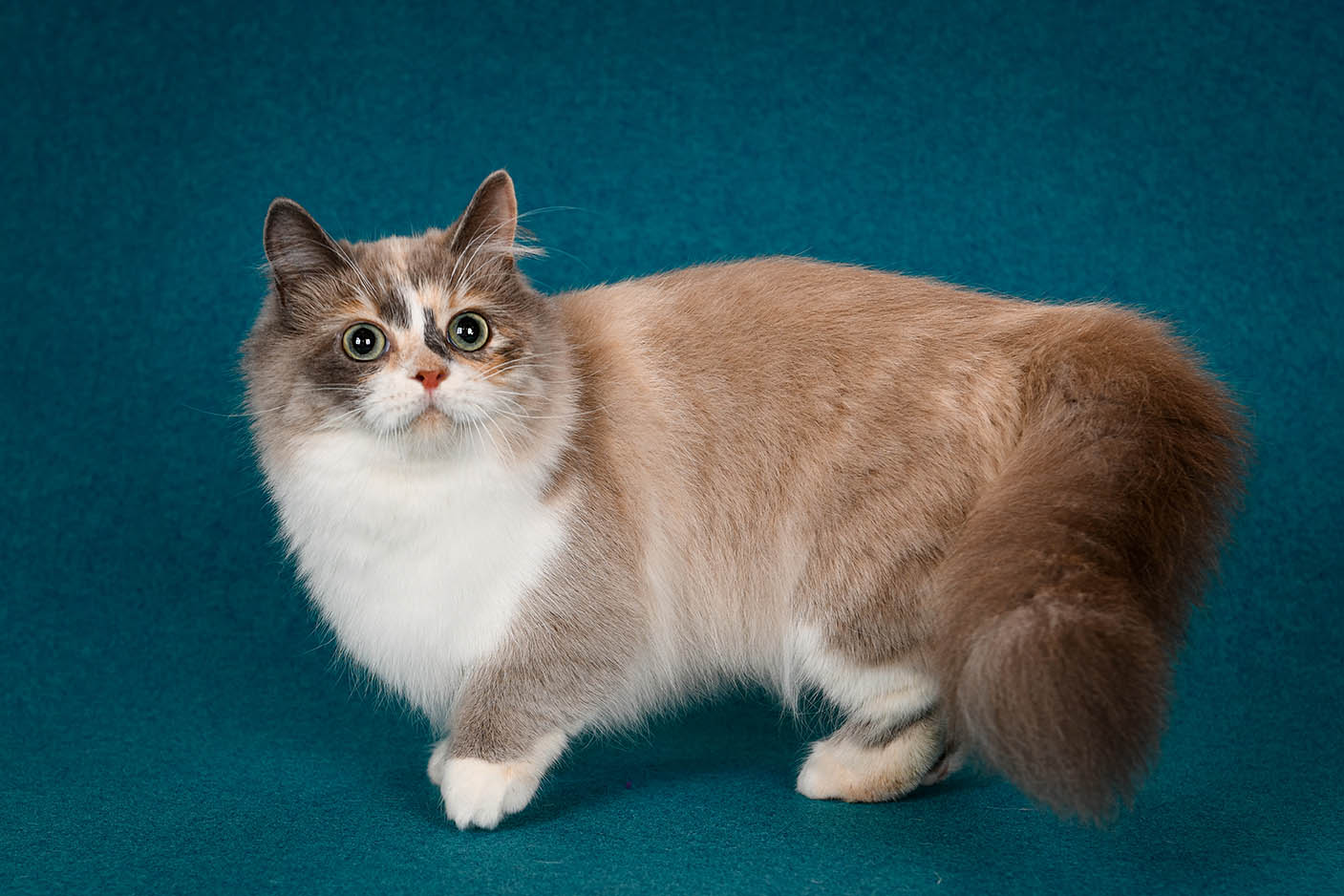
This social breed’s name says it all. The Munchkin looks like any other cat, except with very tiny legs. They grow to 5–7 inches and may reach 6–9 pounds. Munchkins are achieved through a genetic defect that creates a form of dwarfism. Unfortunately, there is a lot of irresponsible breeding that surrounds the Munchkin, including inbreeding and breeding for appearance without consideration for health.
15. Bambino
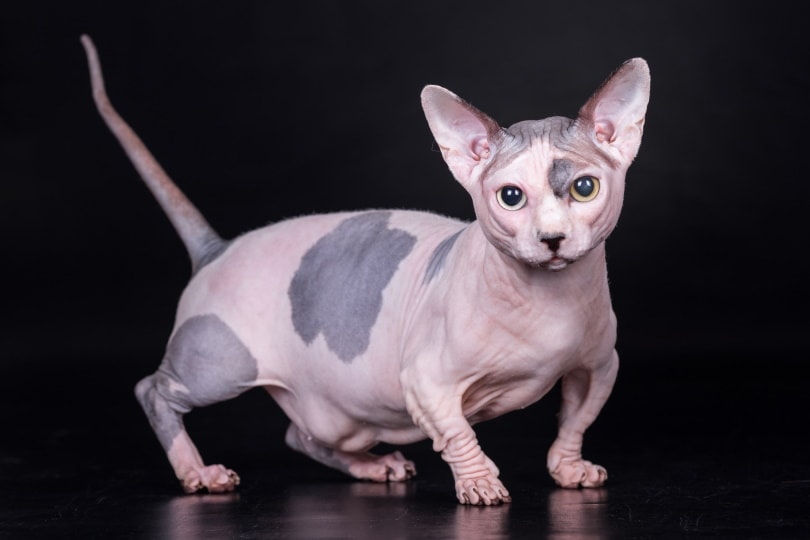
Bambinos are essentially Munchkin Sphynx cats. They weigh 5–9 pounds and only grow to around 5–7 inches in height. Like Munchkins, Bambinos have a lot of controversy and irresponsible breeding practices surrounding them, so choosing a responsible breeder is essential to ensuring the health and well-being of the cats.
- See also: How Much Does a Teacup Cat Cost?
16. Dwelf

The Dwelf is a crossbreed between the Munchkin, Sphynx, and American Curl. They are similar in appearance to Bambinos, but they have the distinguishing characteristic of the American Curl’s ears. The Dwelf reaches 6–7 inches and rarely exceeds 7 pounds.
17. Minuet

This laid-back breed started with crossbreeding Persians and Munchkins. They have the short, rounded face of a Persian with the short legs of a Munchkin. The Minuet only reaches about 8 pounds and is 7–9 inches in height. Like the other short-legged breeds on the list, there is some controversy surrounding this breed.
Final Thoughts
Who knew there were so many tiny cats out there? No matter what personality you’re looking for in a cat, there’s a tiny cat that will suit your home and lifestyle. Ensure you are getting your cat from a responsible breeder who has properly health tested their breeding cats and provides health guarantees and veterinary care to the cat before you take it home.
Breeders that breed solely for a specific look with no consideration for the health and well-being of their cats and kittens don’t just hurt those cats, but they also lead to the decline of carefully curated breeds.
See Also:
- What Kind of Cat Was Grumpy Cat? Famous Cat Breeds Revealed
- 11 Best Animal Podcasts – Reviews & Top Picks
Featured Image Credit: Nataliya Kuznetsova, Shutterstock


